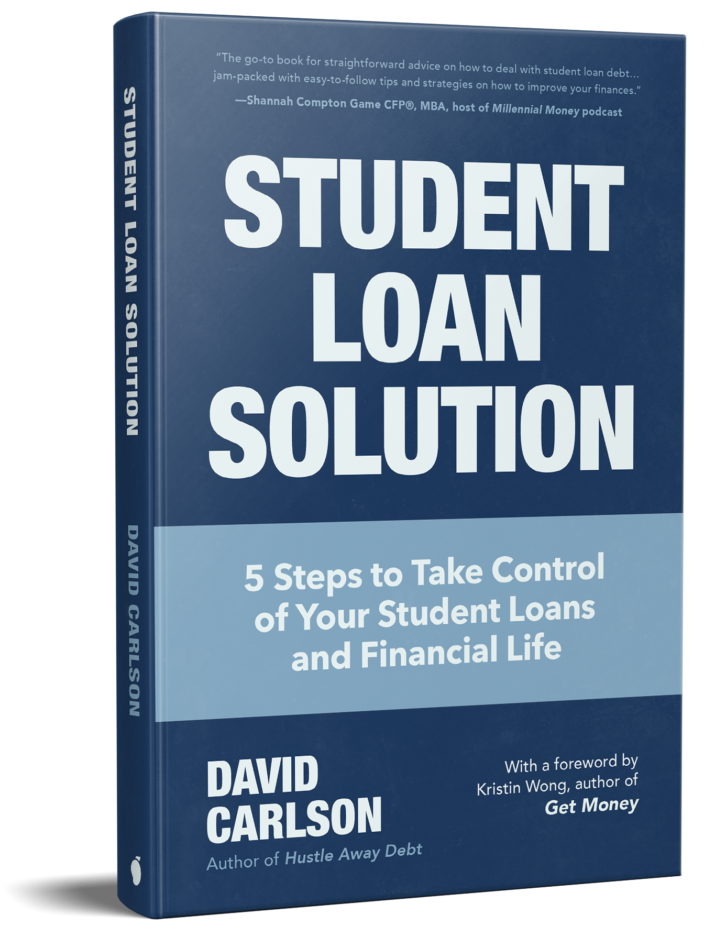 This is a sponsored post on behalf of our friends at Citizens Bank. Despite Citizens Bank’s sponsorship, all opinions and/or advice are provided by YoungAdultMoney.com. #sponsored.
This is a sponsored post on behalf of our friends at Citizens Bank. Despite Citizens Bank’s sponsorship, all opinions and/or advice are provided by YoungAdultMoney.com. #sponsored.
We kicked off the year here at Young Adult Money with a challenge to anyone with student loans: take control of your student loans and your financial life.
This starts with a simple step: confronting your student loan debt.
People avoid their student loan debt for many reasons. They may regret it. Or it may even make them physically sick to think about how much they owe.
I’ve been there. Student loans have been a huge financial challenge for me and my wife. Two private school undergrad degrees plus one graduate degree will do that to you.
But when you avoid your student loan debt and fail to confront it you miss out on potential opportunities to save money or have your loans forgiven.
Even if you are actively making payments on your loans, unless you take the time to understand them you will have no idea whether your repayment plan is the best choice for your finances.
If you need a little extra push to confront your student loans, I’ve put together the top reasons to confront your student loan debt.
You May Have Options You Didn’t Know About
One of the biggest mistakes borrowers make is going into forbearance instead of using an income-driven repayment plan (note: income-driven repayment plans are typically only available for federal student loans). And it’s no surprise; forbearance is an attractive option (at least on the surface). Forbearance allows you to completely stop making payments on your loans for up to twelve months at a time. Out of sight out of mind, right?
Unfortunately, forbearance inevitably increases the total amount of loans you have due to interest accruing each month. Every month you aren’t making a payment is another month where interest builds. Once you exit forbearance and are moved back on the standard ten-year repayment plan, all that accrued interest is added to the principal balance of your loan through a process called capitalization.
Some borrowers may choose forbearance because the amount they owe on loans is simply too much, and forbearance is easy. But they may not have been aware that an income-driven repayment plan would lower their payment to a reasonable amount. In most cases their (reasonable) payment would at minimum cover the interest on their loans, meaning their loan balance would not grow over time.
This is just one example where confronting your loans reveals new options and opportunities that you may not have known about.
You Could Save Money
One of my biggest regrets with repaying my student loans was not looking into ways to save money. We had a variety of private loans that had double-digit interest rates. While we did pay these off a bit more aggressively than our other loans, we could have refinanced at a lower interest rate and potentially saved hundreds or thousands of dollars. But we didn’t.
If you haven’t received a free rate quote from a bank that refinances student loans, there’s no better time than now. You can get a free rate quote from Citizens Bank. At the very minimum you should have an idea of what rate you would get if you refinanced, and a free rate quote can do that for you.
An additional note that if you have private student loans it makes a ton of sense to refinance your loans at a lower interest rate. Private student loans don’t come with the same income-driven repayment options or opportunities for loan forgiveness as Federal loans, so refinancing is a very attractive option.
You Could Have Your Loans Forgiven
Forgiven? Really?
Yes, for certain federal student loans there is a path for student loan forgiveness.
That doesn’t mean it’s easy or realistic for every borrower, but there are opportunities.
The most popular type of loan forgiveness is Public Service Loan Forgiveness, or PSLF. If a borrower makes 120 qualified monthly payments towards qualifying student loans, while on a qualifying repayment plan, while working full-time for a government or 501(c)(3) nonprofit, you can apply to have your loans forgiven. Based on that string of requirements this obviously is only available for a limited number of borrowers, but it is an opportunity nonetheless. Besides the fact that it’s only 120 monthly payments, which means you could receive forgiveness as quickly as ten years, the loans are forgiven tax free.
But if you don’t qualify for PSLF you may still be eligible for loan forgiveness, though the time frame is twenty to twenty-five years instead of ten, and whatever is forgiven will be taxed as regular income. This entails getting on an income-driven repayment plan (and staying on the same one for the duration), and there are still limitations as to which federal student loans are eligible for forgiveness.
And this is the problem with not confronting your student loans: If you don’t confront them, you may never have heard about loan forgiveness, and you almost certainly wouldn’t know whether or not you qualify.
Your Loans Aren’t Going Anywhere
Student loans are unlike any other debt in the sense that they are nearly impossible to discharge in bankruptcy; it stays with you until it is paid off or forgiven. If you don’t make payments and default on your loans, your tax refund, wages, and social security may be garnished by the government as they try to collect on your debt.
That’s why it’s so important to confront your student loan debt. Whether you have fallen behind on your student loans or are making regular payments and just need to spend some time analyzing your repayment strategy, it’s important to take on your student loan debt. It may be a long journey, but the sooner you understand your loans and repayment strategy, the sooner you can feel confident in your repayment strategy.


Great advice! I wish I had taken on my student loans as soon as I graduated. Would have saved myself so much money!